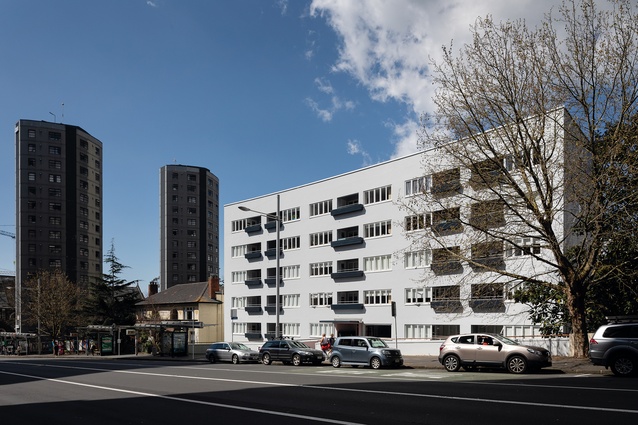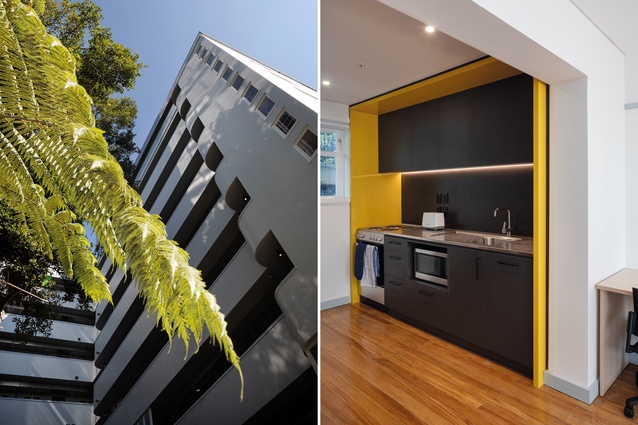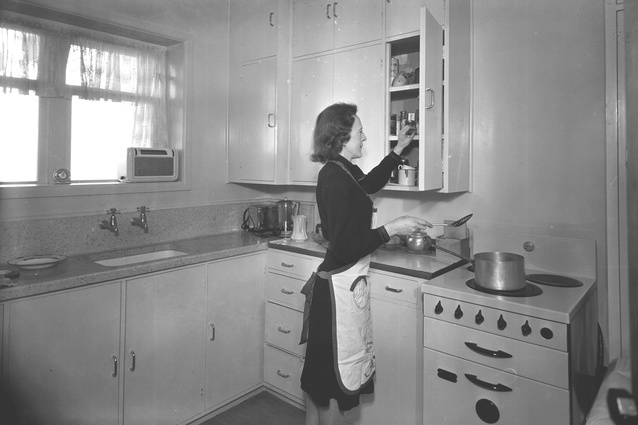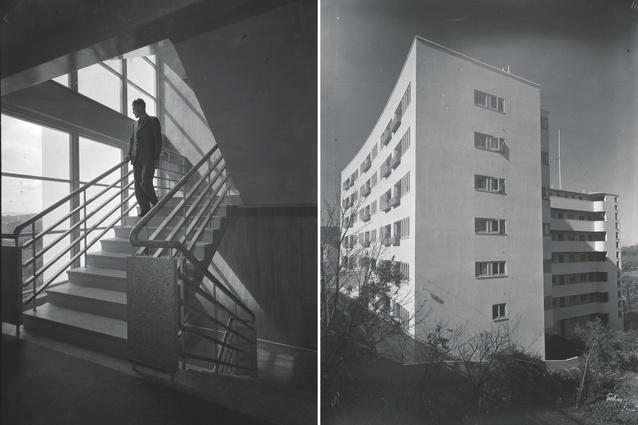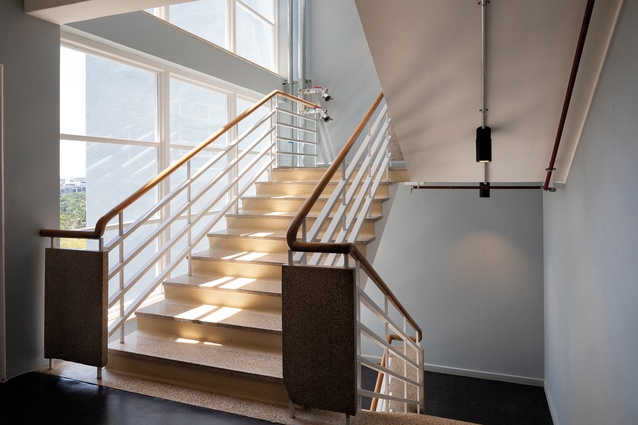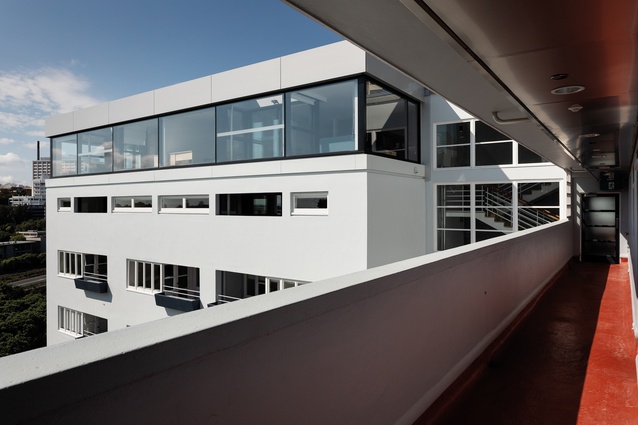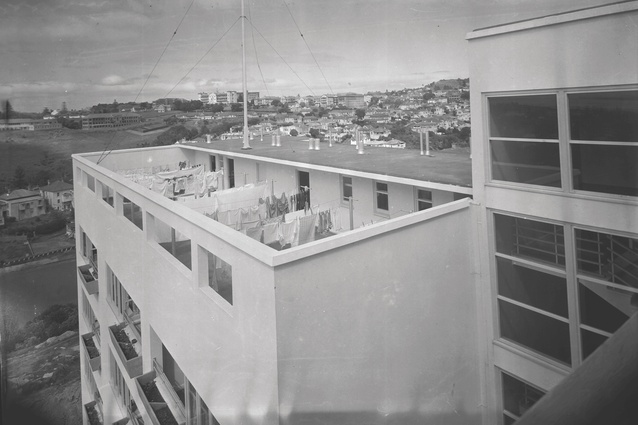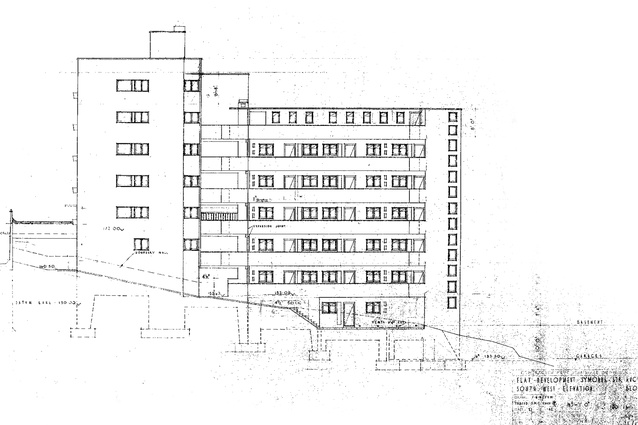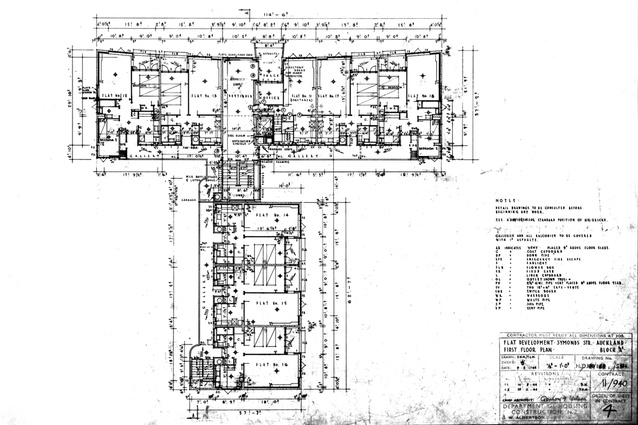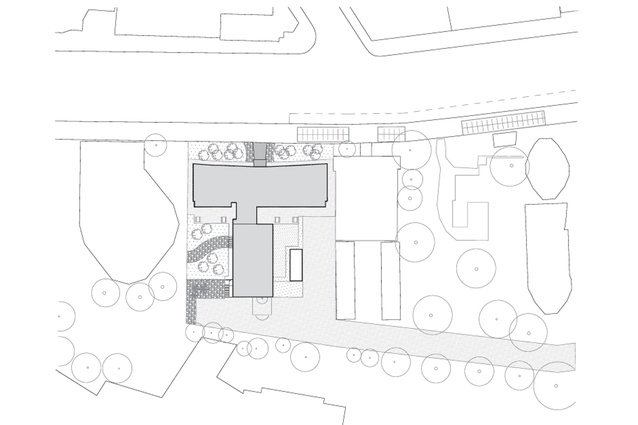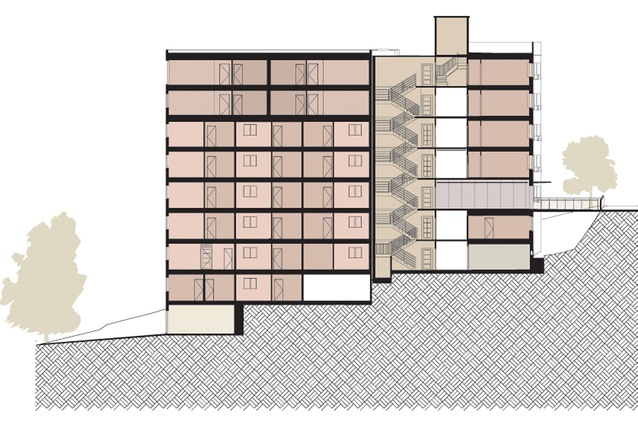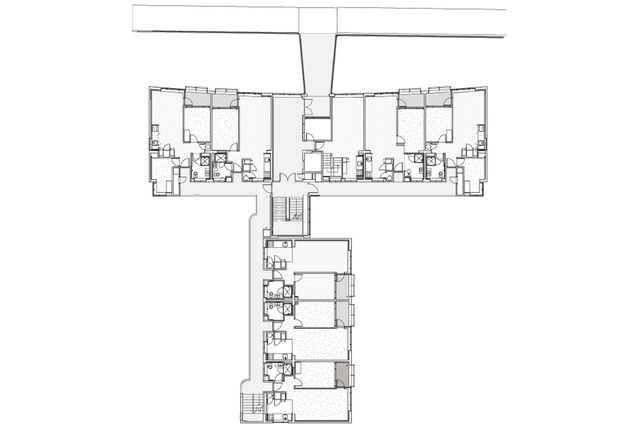Dam fine curve: Symonds Street Flats
Julia Gatley delights in the dialogue between old and new in RTA Studio’s revitalisation of Fred Newman’s 1945 Symonds Street Flats as student accommodation.
The University of Auckland’s recent record of looking after its modern heritage buildings is mixed. It has demolished the Maidment Theatre and the low-rise wing and external staircase of the 1960s’ Science Building and has plans to demolish the Recreation Centre, the Conference Centre and International House.
But, equally, it has done a wonderful job in retaining and repairing the Science Building’s tower block, the 1960s’ Engineering Building, the Thomas Building and the Maclaurin Chapel.
The Symonds Street Flats can now be added to this list; they were purchased by the university in 2016 and subsequently adapted for use as postgraduate student housing, under the name of Waikohanga House. It is, in many ways, an exemplary revitalisation project, requiring little intervention at the levels of structure and overall spatial layout.
The Symonds Street Flats were designed during World War II as state rental flats, with construction delayed because of the war until 1945–47. The design was produced within the Department of Housing Construction (from 1943, the Housing Division of the Ministry of Works). Austrian émigré Fred Newman is recognised as lead designer.
The building bears similarity to its predecessors, notably Wellington’s Dixon Street Flats, as well as their Auckland counterpart, the Lower Greys Avenue Flats, which were also built between 1945 and 47. Wellington’s Gordon Wilson Flats and Auckland’s Upper Greys Avenue Flats came later, in the 1950s.
The Gordon Wilson Flats and Upper Greys Avenue Flats are both in sorry states of repair. Housing New Zealand Corporation sold the former to Victoria University of Wellington in 2014. The university has been trying to have the building de-scheduled ever since, to enable demolition, while the housing agency still owns the latter building, but intends to demolish it and replace it with a much larger complex of housing and social facilities.
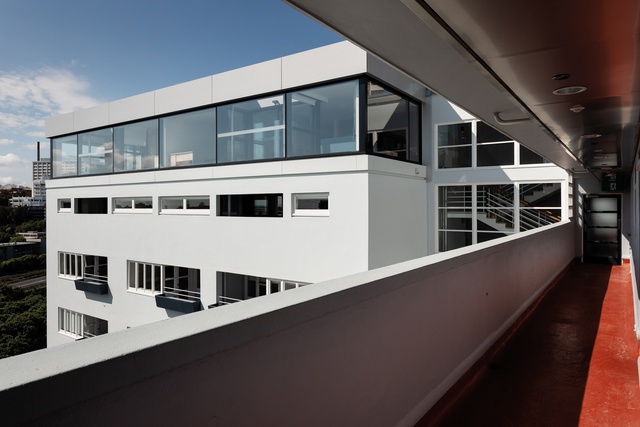
The reuse of the Symonds Street Flats stands in sharp contrast. It, too, had been threatened with demolition only a few years ago. In 2013, local newspapers reported that it was suffering from failing pipes, leaks and deteriorating plumbing. Housing New Zealand vacated it of its tenants from late that year. The building was already scheduled Category A on Auckland Council’s district plan so demolition was not an option. The housing agency commissioned Salmond Reed Architects to advise on repair but, rather than proceeding with the recommended works, it opted to sell the building.
Upon purchase, the University of Auckland commissioned RTA Studio to repair and adapt the flats to be student housing, with conservation advice provided by Archifact. The building’s heritage status meant that the project extended RTA’s long-standing interest in the dialogue between old and new building fabric, taking it to a new level. The firm acknowledges both the quality of the building’s original design and construction, and the value of the input from the various heritage professionals – from Archifact, Auckland Council and Heritage New Zealand.
The result is terrific. It retains as much heritage fabric as was practicable, while also including the necessary repairs and accommodating new work, which takes its lead from the old but is recognisable as new. None of this is easy as every decision can easily become a debate.
The revitalised building still has its original reinforced-concrete bulk, comprising two six-storeyed blocks at right angles to each other to form a T-shaped plan, complete with a subtly curved street façade, individual balconies and signature flower boxes. The pedestrian bridge from Symonds Street to the main entry remains a key feature, as do the original terrazzo staircase and its associated glass wall, near the junction between the two blocks. The building even retains the bluey-grey colour scheme that it has had for decades now.
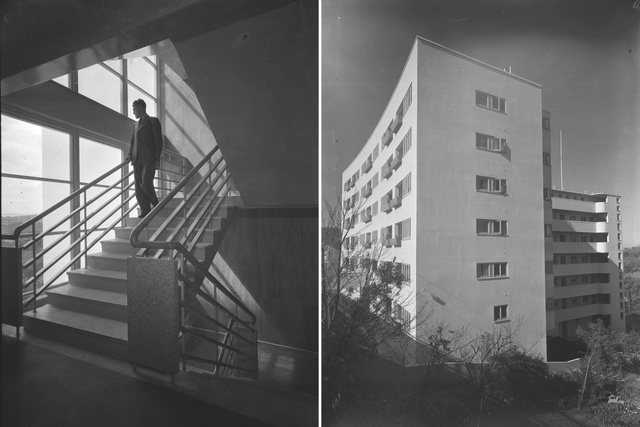
People ask where the curve of the street façade came from. Certainly, there were precedents within European modernism – buildings as well as hydro dams – but, equally, it may simply have been a response to the curve of Symonds Street, just near where the building is located. Reinforced-concrete construction enabled it.
Happily, the concrete structure required little strengthening, although some repair work was needed, particularly in the lintels. New plumbing and drainage replace the damaged old pipes, with new pipes no longer embedded within the concrete walls but exposed and readily accessible in the event of any future problems.
The two blocks originally housed 45 flats (of one, two and three bedrooms), roof-top laundry facilities, basement storerooms and three garages. Most of this is still intact, other than the communal laundry, which was moved to the basement to allow better use to be made of the upper-level space, where there are now two new three-bedroomed flats, with another two above, intended for postgraduate students with families. It is here that the new takes its lead from the old, reinterpreted in different materials. For example, wall and roof planes are continued and new balustrades at the upper level follow Newman’s curved concrete ones in shape but are made from glass.
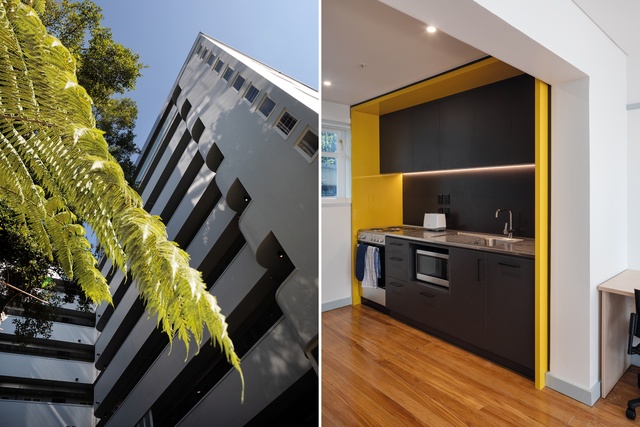
The flats themselves are also intact, with just the connections between kitchens and living spaces opened up and new kitchen and bathroom facilities added. The kitchens are contained within yellow boxes, giving a splash of colour to otherwise fairly neutral interiors. Balconies continue to open off the living areas, with simple rails above the planter boxes for safety (the option of closing in the balconies was discussed, but was abandoned because it could not be done without having a negative impact on heritage value).
Original joinery was kept where possible, including timber window frames as well as curved shelving units in living areas. Timber floors that had not succumbed to dry rot were also repaired and left uncovered.
It’s fantastic to see the old building in use again and looking so good, after several years of dormancy. I’m left hoping that the success of Waikohanga House will encourage the University of Auckland to reconsider its plans for International House. In that event, the discerning architecture student would be spoilt for choice.
This article first appeared in Architecture New Zealand magazine.


